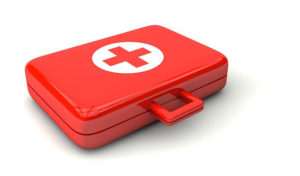Over the past few weeks, the national conversation has focused on tragedies around the country.
During these times, many associations find themselves in an internal debate: Do we operate business as usual, or do we publicly respond to these events?

The answer—and the proper response—is based on the impact the event has on your members. There is a delicate balance; your organization doesn’t want to be seen as opportunistic or as capitalizing on tragedy, but it also doesn’t want to seem out of touch by not acknowledging current events. After all, your association is not operating in a vacuum; your communications are being received by audiences who are also hearing about these tragedies, and often are looking for a way to help.
The power of an association is that the collective efforts of its members are greater than what any one member could individually accomplish. Here are several ways you can help your members help others:
- Use what your members already have. Following the recent hurricanes, the Corporate Housing Providers Association knew its members would be in need of housing inventory to provide insurance housing for those who lost their homes. CHPA sent a call-out to all members asking them to support their fellow corporate housing providers in the affected areas. Members responded with offers of available inventory, furnishings, supplies, trucks and even office space, systems and staff. Offers poured in from all over the country; even members who suffered damage from the storm offered to help competitors in the area who needed assistance.
- Determine how your industry might be affected. Though located far from the flooding in Texas and Louisiana, the Indiana Society of Professional Land Surveyors recognized that their colleagues in these areas were heavily impacted. ISPLS responded by encouraging members to support disaster relief efforts through the National Society of Professional Surveyors Foundation, Inc., which is working to provide assistance to members who lost their homes.
- Knowledge is power. The Society for Nutrition Education and Behavior had a number of members in areas affected by the hurricanes, and wanted to equip them to deal with the disaster. A member authored several resources on food safety during disasters which were disseminated to local communities and shared by other SNEB members. This included tips on food safety during and after power outages, information on what food should be included in disaster kits, and no-cook recipes using pantry staples.
- Utilize your relationships. If your organization already partners with a philanthropic or charity cause, find out how they are working to support disaster relief—and let members know how to support these efforts, whether it’s time, awareness, or monetary donations.
- Know your limits. Especially for organizations whose members reach across the globe, if you were to react to every single event or tragedy, you wouldn’t be doing anything else. For example, there were major floods and mudslides happening in India around the same time as Harvey and Irma. Also, major wild fires were tearing across the Pacific Northwest. Not every group is poised to effectively help every situation. Evaluate the impact on your members and weigh the costs of acting versus the costs of not acting. Support causes where your organization can most effectively help.
While no one wants to think about worst case scenarios, consider how your organization is poised to help your members help others. Doing so will help your organization come together during difficult times and support those who need it most.

